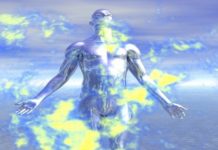Although teaching people to become ambidextrous has been popular for centuries, this practice does not appear to improve brain function, and it may even harm our neural development. Calls for ambidexterity were especially prominent in the late 19th and early 20th centuries. Michelangelo, Einstein, Tesla, Leonardo da Vinci and Truman were all physically ambidextrous.
For instance, in the early 20th century, English propagandist John Jackson established the Ambidextral Culture Society in pursuit of universal ambidexterity and “two-brainedness” for the betterment of society. This hype died down in the mid-20th century as benefits of being ambidextrous failed to materialize.
Given that handedness is apparent early in life and the vast majority of people are right-handed, we are almost certainly dextral by nature. Recent evidence even associated being ambidextrous from birth with developmental problems, including reading disability and stuttering. A study of 11-year-olds in England showed that those who are naturally ambidextrous are slightly more prone to academic difficulties than either left- or right-handers. Research in Sweden found ambidextrous children to be at a greater risk for developmental conditions such as attention-deficit hyperactivity disorder.
Another study revealed that ambidextrous children and adults both performed worse than left or right-handers on a range of skills, especially in math, memory retrieval and logical reasoning.
These effects are slight, but the risks of training to become ambidextrous may cause similar difficulties. The two hemispheres of the brain are not interchangeable. The left hemisphere, for example, is typically responsible for language processing, whereas the right hemisphere often handles non-verbal activities. These asymmetries probably evolved to allow the two sides of the brain to specialize.
To attempt to undo or tamper with this efficient setup may invite psychological problems. It is possible to train your nondominant hand to become more proficient. A concert pianist demonstrates superb skill with both hands, but this mastery is complementary rather than competitive.
The visual arts may enhance right-brain function, though not at the expense of verbal specialization in the left hemisphere. A cooperative brain seems to work better than one in which the two sides compete.
This does not mean that every ambidextrous child will develop these learning disabilities, but it implies that mixed handed(ambidextrous) kids are at a higher risk. What we know is, handedness is related to brain development which is associated with learning disorders.



































